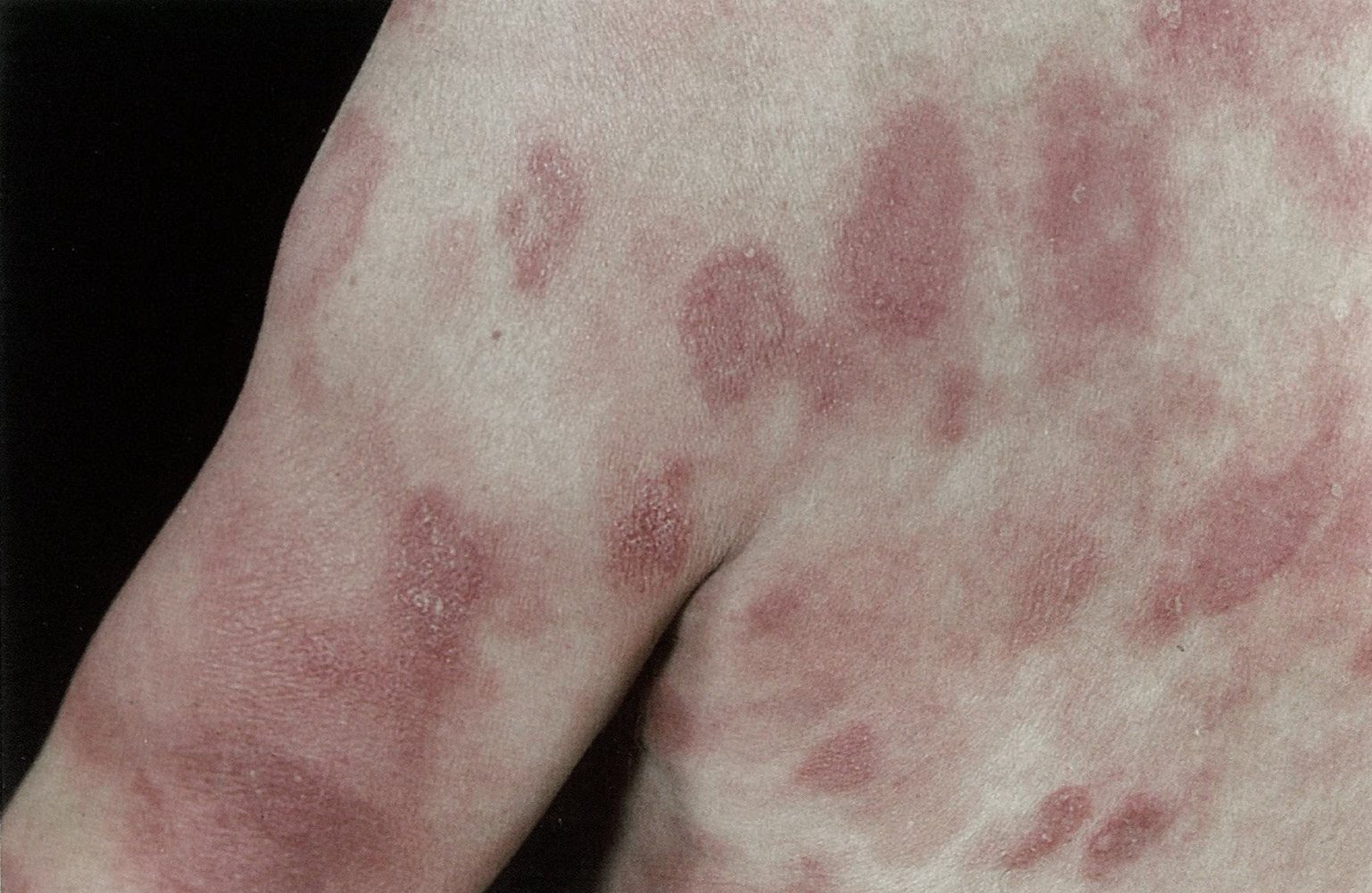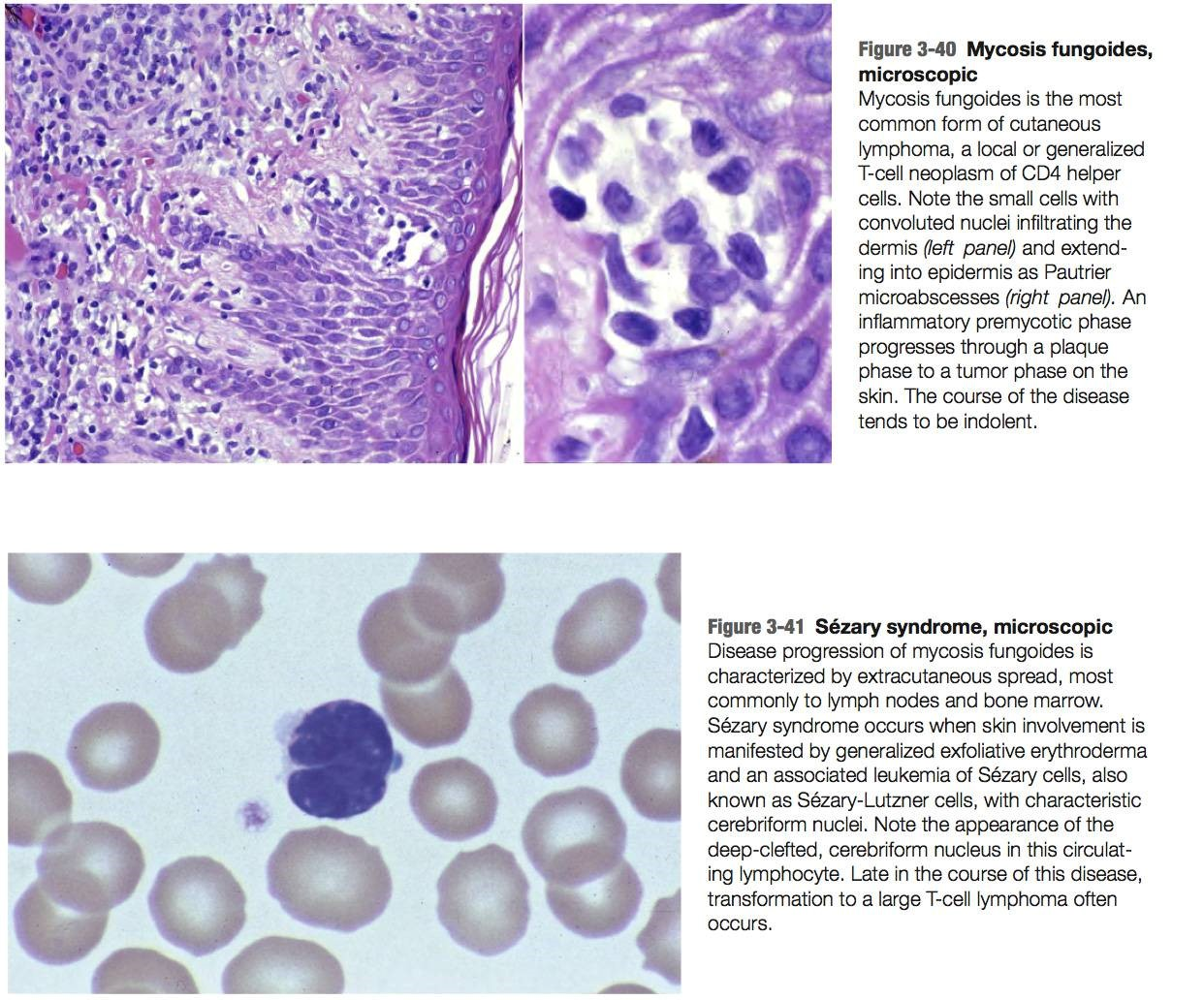Mycosis fungoides is an indolent, CD4+ cutaneous T-cell lymphoma that presents on the skin.
Epidemiology
- Incidence
- Approx. 4% of non-Hodgkin lymphoma cases
- Mycosis fungoides and Sézary syndrome are the two most common cutaneous T-cell lymphomas (CTCL).
- Age: mostly middle-aged or elderly patients
- Sex: ♂ > ♀
Etiology
Pathophysiology
Clinical features
- Initially, pruritic cutaneous plaques, patches, and brownish nodules develop.

- Subsequently, systemic spread occurs, including lymphadenopathy and hepatosplenomegaly.
Diagnostics
- Atypical CD4+ T-cells with cerebriform nuclei (from clumped chromatin) infiltrating the dermis and epidermis

- Pautrier microabscesses: aggregates of atypical CD4+ T-cells within the epidermis that are indicative of the disease

Differential diagnosis
Sézary syndrome
Definition
A cutaneous T-cell lymphoma with leukemic dissemination of mutated T cells
Epidemiology
advanced form of mycosis fungoides or arise de novo
Clinical features
- Systemic skin lesions
- Erythroderma accompanied by palmar and plantar hyperkeratosis
- Intense pruritus
- Generalized lymphadenopathy
Diagnostics
Atypical T cells (Sézary cells) on peripheral blood smear
Link to original
Tip
The leukemic dissemination present in Sézary syndrome distinguishes it from mycosis fungoides.
